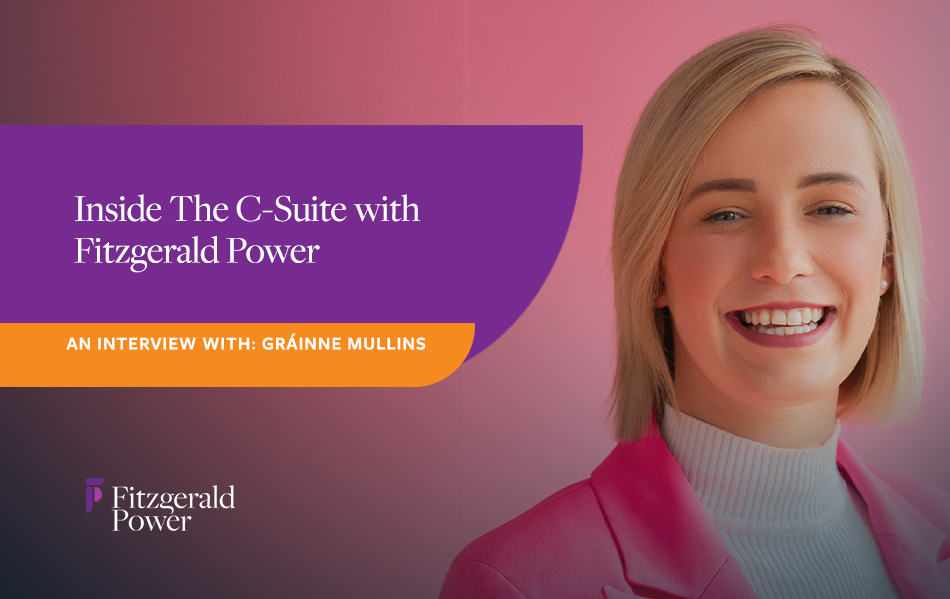Expertly Put is a series of exclusive conversations with industry experts, designed to help business owners and management teams gain a deeper understanding of the topics that matter most. In this edition, Fitzgerald Power’s Corporate Finance Partner, Noel Winters, sat down with corporate law expert Peter O’Neill to unpack the structure, purpose, and practical challenges of the Share Purchase Agreement (SPA), a document central to many corporate transactions. Together, Noel and Peter explore earn-outs, the difference between a warranty and an indemnity, and the advice they’d give to buyers or sellers approaching their first SPA.
Noel Winters (NW):
Peter, thank you for taking the time to discuss a fundamental document in the legal process of what is, for many, a once-in-a-lifetime event: the purchase or sale of a business. Firstly, what is a Share Purchase Agreement, and when is it typically used?
Peter O’Neill (PON):
It’s the cornerstone of most corporate transactions in Ireland. Essentially, an SPA is a legally-binding contract setting out the terms under which shares in a company are bought and sold. It may cover the entire share capital of a company or just part of it. The agreement provides a roadmap for completing the transaction and allocates risk between the buyer and the seller.
NW:
What are the essential clauses every SPA should contain?
PON:
While no two SPAs are identical, there are some clauses that are common across all SPAs. Typically, the document begins with introductory and definitional sections and concludes with boilerplate clauses. If we think of the SPA as a body, those sections are its skeleton that underpins everything else. The heart of the document is the purchase price and payment terms, which determine how, when, and under what conditions money changes hands.
NW:
How are the purchase price and payment terms usually structured in an SPA?
PON:
The payment clause is one of the first sections that both the buyer and the seller should focus on. It must accurately reflect the commercial agreement reached between them: how much is being paid, when, and on what basis. Even if a term sheet or heads-of-terms haven’t been formally documented, the SPA should record the true commercial intent. The clause should also outline what you’re going to pay, when you’re going to pay it and on what basis you are paying that sum. Without that information, the payment clause is not detailed enough and needs to be redrafted.
NW:
The term of phrase “purchase price adjustment”. What is this? And how is the purchase price adjustment clause typically structured? I think people believe once a price is agreed, it’s set in stone…
PON:
The price is often based on a valuation which is arrived at after engagement with firms like Fitzgerald Power. A purchase price adjustment mechanism allows the final price to reflect the company’s actual financial position at completion. Because the price is often based on estimates of working capital, debt, and cash, it’s rarely exact. Completion accounts are therefore prepared after the deal closes, showing the true figures. These are compared to the estimates, and a ‘true-up’ payment is made to increase or reduce the purchase price accordingly. This ensures fairness and accuracy for both parties.
NW:
What is an earn-out, and in what situations might it be used?
PON:
An earn-out clause is a provision whereby the seller will be or may be entitled to a future payment if the target company achieves certain milestones or targets. This is becoming increasingly common, particularly where there’s uncertainty about future profitability or where key individuals from the seller’s side will remain with the business.
Another reason why an earn-out will find its way into an SPA will be if there is a fundamental valuation gap between seller and buyer. An earnout will be useful to overcome that gap and allow the deal to proceed, and it will be payable if the company performs in line with what the seller has indicated.
NW:
Do you often see them in SPAs?
PON:
Yes, they have become much more prevalent in the last few years. It could be because of macroeconomic uncertainty or market nervousness. In Irish M&A, you often have indigenous companies being acquired by international players, and now those international players want to preserve the goodwill that the Irish individuals have in the locality and in the business. The earn-out is an effective way to ensure that person continues to have an interest.
NW:
And a buyer seeking to preserve value leads me directly to my next question. What kind of restrictive covenants are common, and how enforceable are they?
PON:
Restrictive covenants are very interesting. They protect the buyer’s investment by preventing the seller from immediately competing with the acquired business. Common examples include non-compete and non-solicit clauses. Under Irish law, these covenants must be reasonable in scope, duration, and geography to be enforceable.
Courts scrutinise restrictive covenants closely, and if they are too broad, the clause may become unenforceable, and there will then be no restrictions on what the seller will do. Each covenant should therefore be carefully tailored to the specific business and transaction.
NW:
What’s the difference between a warranty and an indemnity, and how are they negotiated?
PON:
Warranties are statements of fact about the target company, given by the seller to support the buyer’s valuation. If a warranty proves inaccurate, the buyer may bring a breach of warranty claim, but only if they can demonstrate that they have suffered a loss. It’s not enough that the warranty was technically breached or inaccurate.
By contrast, indemnities are used sparingly in Irish SPAs, usually for specific, identifiable risks uncovered through due diligence or disclosure between the buyer and seller, such as ongoing litigation with uncertain outcomes. They are tightly negotiated and reserved for situations where the risk cannot be otherwise addressed before completion. For example, there might be a big litigation case that the company is involved in, and the outcome is unclear on the date the share purchase completes. An appropriate indemnity might be, whatever the outcome of the case is, that the seller has to reimburse the purchaser for the money that the company may have to pay in relation to that case in the future.
NW:
So, what are the most heavily negotiated terms within an SPA?
PON:
Warranties, indemnities, and the purchase price are always central to negotiation. Beyond those, the limitation of liability provisions is one of the other most heavily negotiated sections. Sellers seek to cap their exposure, set time limits for claims, and establish minimum claim thresholds to avoid trivial disputes.
Another section of the SPA that attracts attention is the conditions precedent clause, where the agreement is signed, but the seller might be expected to undertake certain actions before the transaction actually completes. Ultimately, it’s about agreeing on where the appropriate risk should be balanced between the buyer and the seller.
NW:
What common mistakes or red flags do you see when reviewing SPAs?
PON:
The biggest mistake is treating SPAs as ‘one size fits all.’ Every transaction is unique and deserves a bespoke agreement that captures the commercial intent of the parties. Overloading the document with unnecessary warranties or recycled clauses can slow down negotiations and distract from real issues.
Another common problem is failing to align the legal drafting with the commercial deal. This is where a tailored approach is useful. The document reflects what the parties actually agreed.
NW:
Does that tie into your own approach when negotiating warranties or indemnities on the sell-side vs. the buy-side?
PON:
That’s it exactly, it’s all about commercial intent, not just for myself but for the Irish Market. Generally, in the Irish market, SPAs have become a lot more sophisticated and tailored. When drafting an SPA, you need to use plain language and avoid ambiguities. You need to anticipate any disputes after the SPA has been completed, and all that feeds into the type of documents we’re drafting for our clients.
NW:
Have you ever seen a deal fall apart due to SPA negotiations? What happened?
PON:
Yes, unfortunately, I have, though not necessarily due to the legalities of the SPA, but rather because of specific commercial risks identified during due diligence. In one case, due diligence uncovered a material commercial risk that the seller refused to indemnify. There was no meeting of minds, and the deal couldn’t proceed. Typically, when deals collapse, it’s because the commercial positions are too far apart rather than flaws in the SPA.
NW:
How has your approach to drafting or reviewing SPAs evolved over time?
PON:
My approach has become more focused on clarity and commercial intent. SPAs today are more sophisticated and tailored than ever before. The best ones use plain language, avoid ambiguity, and anticipate where disputes might arise. Drafting with foresight, understanding the commercial drivers and likely points of tension, is what separates a good SPA from a great one.
NW:
Any final advice for buyers or sellers approaching their first SPA?
PON:
Initially, an SPA can seem like a very intimidating document, but if you’re unfamiliar with its structure or its terms, lean on your professional advisor. They can explain it in plain language and break it down to basics so that you’re able to understand and appreciate what it is you’re signing up to. For many people, it’s a once-in-a-lifetime event, and you don’t want to be looking back at it with regrets.
Try to find measures or provisions that will address any specific concerns about the deal. Provisions will only be good if they’re going to be workable for both sides. Ask questions, and challenge what’s in the document until you have a document you are happy with.
We hope you enjoyed the read. Until next time!
For those looking to learn more, our Expertly Put series, which sees members of the team talk to leaders in their field to explain meaty topics, can be found here. To be added to our mailing list to receive these articles directly to your inbox, or indeed anything else, please get in touch today.






